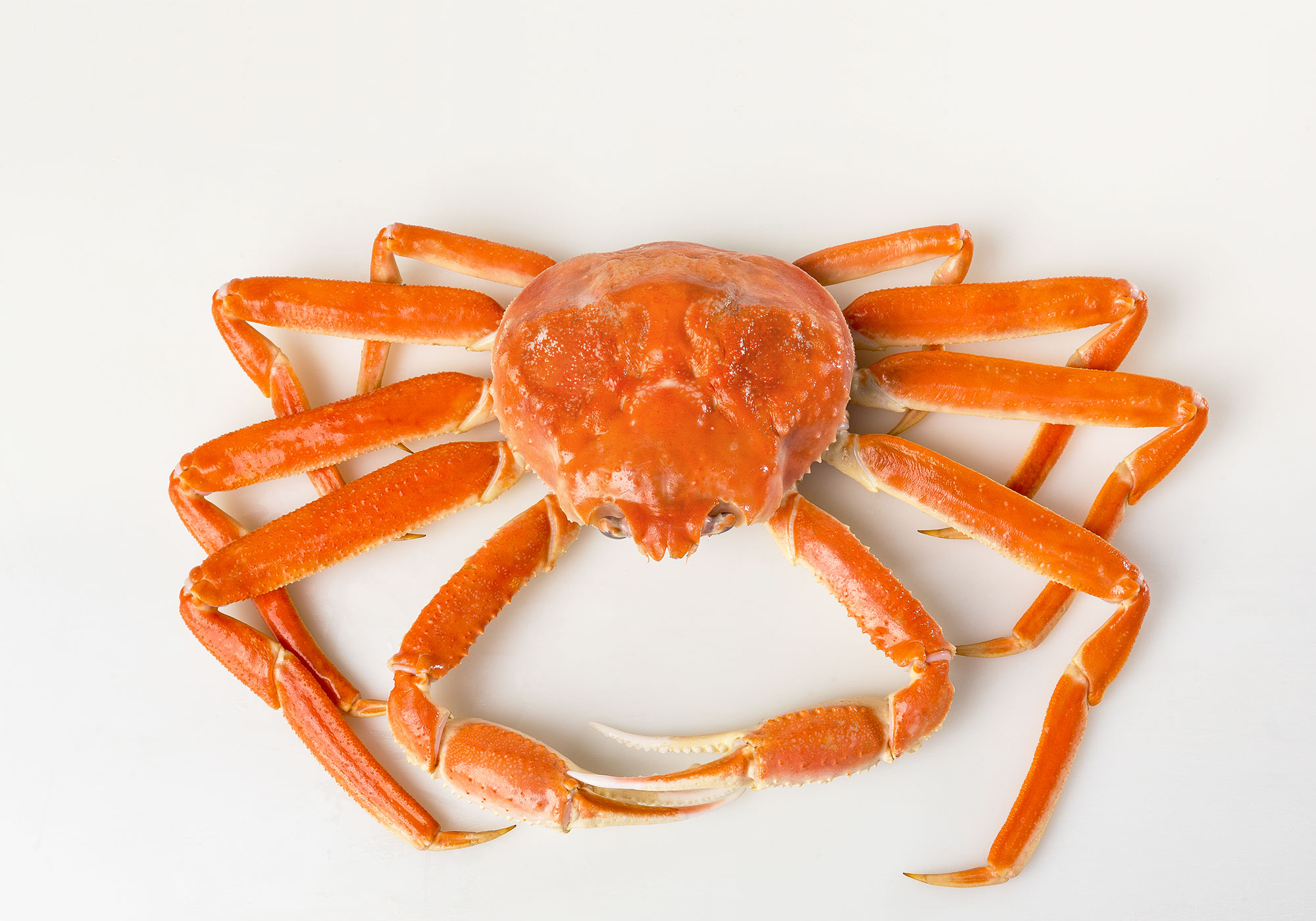Snow crab is a treasured delicacy that graces plates across North America. But where does this tasty crustacean come from and how does it make its way to your dinner table? Let’s trace the fascinating origin and journey of snow crab.
What is Snow Crab?
Snow crab, whose scientific name is Chionoecetes opilio, is a species of crab that lives in the cold waters of the northwest Pacific Ocean. It gets its name from its soft, almost snow-white meat. Snow crab is closely related to other crabs in the Chionoecetes genus including Tanner crab, Queen crab, and Bairdi crab.
Compared to other crabs, snow crab has longer legs, making it look lankier. The males have broader claws than females and can grow up to 6 inches across. Snow crab meat is treasured for its delicate sweet flavor and tender flaky texture. This is what makes it a coveted ingredient in many seafood dishes.
Where Does Snow Crab Come From?
The vast majority of snow crab commercially harvested and eaten around the world comes from Alaska. Other smaller fisheries exist off the coasts of Canada and Russia, but Alaska dominates the global supply.
Within Alaska, most of the harvest comes from the rich, cold waters of the Bering Sea. Snow crab thrive on the continental shelf of the Bering Sea which provides ideal conditions for them to flourish. The crab live on the seafloor, burrowing into the soft muddy and sandy sediment.
Other major fishing grounds include the Chukchi Sea and Beaufort Sea off Alaska’s northern coast Snow crab fisheries in these areas tend to be smaller and more fluctuating in size compared to the Bering Sea.
The Journey from Seafloor to Supermarket
The journey snow crab takes from the seafloor to your supermarket can be summarized in four main stages:
1. Harvest
The commercial harvest of snow crab in Alaska is carefully managed by NOAA Fisheries. The fishing season runs from January to April when the crabs are in prime condition. Fleets of specialized crab fishing boats head out into the Bering Sea to lay their traps.
Once the crab are hauled up, the crews get to work measuring and sorting the crabs Only male crabs of a certain size can be kept while undersized males and females are thrown back Strict regulations help ensure sustainability of the fisheries.
2. Processing
After being caught, the crab are quickly cooked right on the fishing boats. This preserves freshness and prevents spoilage. The cooked crab are then frozen and transported back to onshore processing plants.
At the processing plants, the crab are once again inspected and sorted. The usable meat is extracted from the shells before being packaged, frozen, and prepared for distribution.
3. Distribution
The processed snow crab meat is shipped in refrigerated containers to distribution centers across North America. From these hubs, the packaged snow crab is sent to grocery stores, seafood markets, and restaurants.
Some of the snow crab may be further processed into value-added products like crab cakes. Secondary processors turn the raw meat into these convenience foods.
4. Retail Sale
The final leg of the snow crab’s journey brings it to retailers and eventually the consumer. Grocery store chains sell snow crab in the seafood department, usually in the frozen section. Specialty fish markets and seafood restaurants may sell fresh rather than frozen crab.
When you spy snow crab legs in the store or order them off a menu, keep in mind the thousands of miles the crab traveled from the chilly Bering Sea to your plate!
Sustainability and the Future
Strict fisheries management and responsible harvesting practices help ensure a sustainable snow crab supply. However, like many species, climate change poses a threat to snow crabs. As ocean temperatures rise, the available habitat for snow crabs is shrinking. Scientists are working to understand the impacts of warming seas on snow crab populations.
Through careful stewardship and evolving management strategies, hopefuly snow crab can continue delighting seafood lovers for generations to come. The next time you crack open some snowy-white crab legs, appreciate the crab’s amazing journey and the human effort involved in bringing this tasty treat to your table.

Nutrition Facts Servings: 1; Serving Weight: 100 g (raw); Calories: 90; Protein: 18.5 g; Total Fat: 18 g; Total Saturated Fatty Acids: 0.143 g ; Carbohydrate: 0 g; Total Sugars: 0 g; Total Dietary Fiber: 0 g; Cholesterol: 55 mg; Selenium: 34.6 mcg; Sodium: 539 mg
Check out these seafood recipes for main dishes, appetizers, sides, and more if you need some cooking ideas. You can find a new seafood recipe or an old favorite.
NOAA Fisheries conducts various research activities on the distribution and abundance of Alaska snow crab. The results of this research are used to inform management decisions for this species.
NOAA’s StockSMART web tool lets you search for Alaska snow crab and any other species of interest to find out more about stock status, management, assessments, and resource trends.
Is Alaska Snow Crab Sustainable?
U. S. Wild Alaskan snow crab is a good choice for seafood because it is managed in a way that doesn’t harm the environment and is harvested in a way that follows U.S. S. regulations.
Generally harvested from January to April in the Eastern Bering Sea, but available year-round.
U.S. wild-caught in Alaska.
The snow-white meat is what gives the snow crab its name and its reputation as a delicacy.
Alaska snow crab is a low-fat source of protein.
Facts: The Snow Crab
FAQ
Where does snow crab come from?
Where is most snow crab caught?
Is snow crab or king crab better?
Where do they harvest snow crab?
